Trinity Faculty: How We Teach During the Pandemic
Whether their courses are offered in-person, remotely, or as a combination of both, Trinity College faculty members have adopted new technology and strategies this semester to connect with students and create solutions to the challenges of teaching during a pandemic.

Visiting Assistant Professor of Physics Austin Reid said he appreciated that Trinity asked faculty members to individually decide if they wanted to teach in a remote, hybrid, or in-person format this year due to COVID-19. “That made it easy for us to plan and to talk about how we wanted our classes set up,” Reid said.
Trinity’s Center for Teaching and Learning (CTL) hosted a series of Design Studios workshops this summer to help immerse faculty members in learning best practices for online teaching and virtual student engagement as they prepared courses for their chosen format.
Teaching remotely
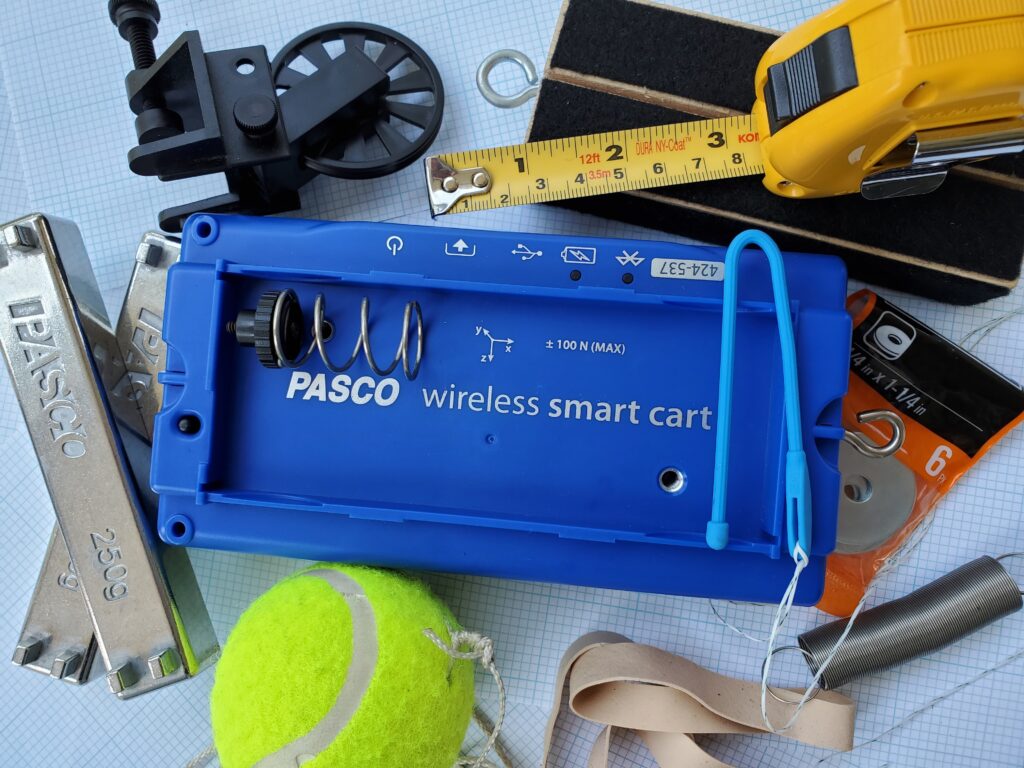
Reid and Associate Professor of Physics Barbara Walden have integrated hands-on lab components into remote physics classes. Over the summer, they assembled lab kits equipped with Hot Wheels cars, Smart Carts, and tablets. Each student received a physics lab kit—even an international student in Poland—which allows them to conduct the same experiments from wherever they are. Students use the tablets to take quizzes and do remote group work; Smart Carts are used for data acquisition with pulleys, strings, and weights; and the Hot Wheels cars, springs, and ping pong balls help students to visualize and analyze problems. The lab kits were supported by a $20,000 grant from the Davis Educational Foundation.

“You learn physics best by doing physics,” Walden said. “We wanted a way for students to be doing experimental work. Now that we have these kits, the equipment will take us well beyond this particular year.” Walden also has students collaborate in real time. “We use Wacom tablets to simulate writing on a white board,” she said. “There are links on the course’s website that go to our virtual white boards. Students draw using their tablet and it appears on their group’s online group white board.”
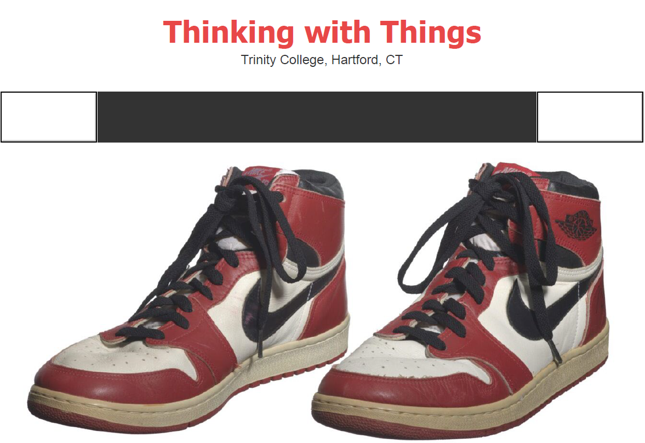
Similarly, Ann Plato Fellow in Anthropology and American Studies Amanda Guzman has taken a creative approach to a remote course that is built upon hands-on experiences. In her course, “Thinking with Things: Exploring Our Material World,” Guzman would normally bring in a collection of objects related to the topic of the week for students to observe and engage with. “Now I have them work with things in their own spaces, which I’m sure was very weird at first, but actually, I think it works really well,” Guzman said. “For the first day, I had all the students introduce themselves with a ‘pandemic object’—an object that they changed their relationship with during the pandemic.” The objects included golf clubs and Bibles, and they helped students conceptualize how the pandemic changed their relationship to the material world.
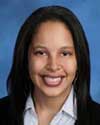
Guzman’s students also post asynchronously on forums in Moodle and annotate readings together. Guzman is working to connect with students outside of class through digital assignments that will culminate in a final product available on a WordPress website.
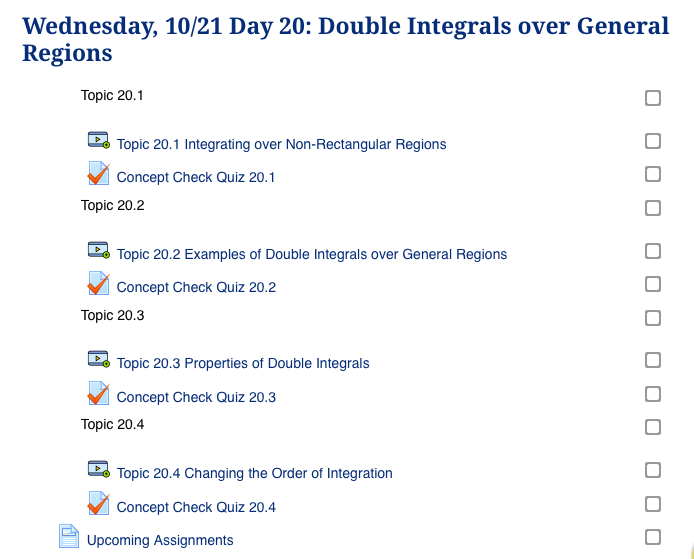
Associate Professor of Mathematics Mary Sandoval teaches remotely using a flipped classroom model. “I present the material in recordings with quizzes to help students go along,” she said. “Then I use class time to answer questions on the material and to have them do the homework.” Sandoval prepares class material three weeks in advance. Students must watch four recorded video lectures every week; each video typically lasts around 6 to 8 minutes, coupled with multiple-choice quizzes to ensure students are actively engaged and learning.
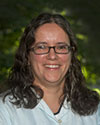
Sandoval looks to student feedback through weekly check-in surveys on Moodle. “So far, the students seem to like it,” Sandoval said. “I feel like the whole course is centered around engaging with students outside of class.”
Assistant Professor of Educational Studies Stefanie Wong is teaching the Community Action Gateway first-year seminar remotely, using Zoom to engage with the class synchronously for live discussion. “Another tool I’m using with the support of the library is called Padlet, which is a sort of virtual interactive bulletin board,” Wong said. “Students can all see each other’s posts and interact in real time.”
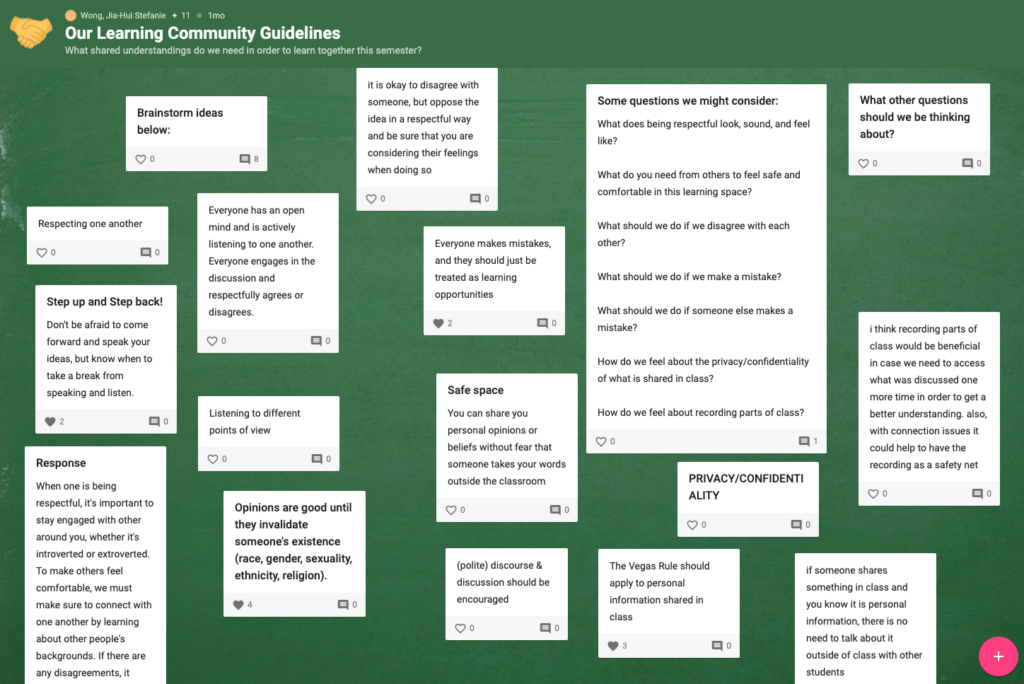
The members of the class also use cloud-based Google Slides and Google Docs software to access common materials and work collaboratively on creating projects with their partners in the Hartford community. “This class normally creates videos for their community partners; now they’re creating social media posts instead,” Wong said.
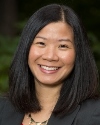
The pandemic has led Wong to make other changes, as well. “I’ve eliminated late penalties on assignments,” she said. “I ask students to let me know if they need an extension and then tell me what the new deadline will be. We know that situations change quickly these days, and students have different needs during the pandemic.”
Teaching in person

Assistant Professor of Psychology Michael A. Grubb chose to teach in person this semester, but has augmented his courses with collaborative technology that allows him and the students to work together closely, even when keeping their physical distance in large, nontraditional classroom spaces. “I’m teaching in the Admissions Grand Room, with 6 feet or more between desks,” Grubb said. “This semester the students are using Google Docs to share work during class, rather than gathering at one student’s computer.”
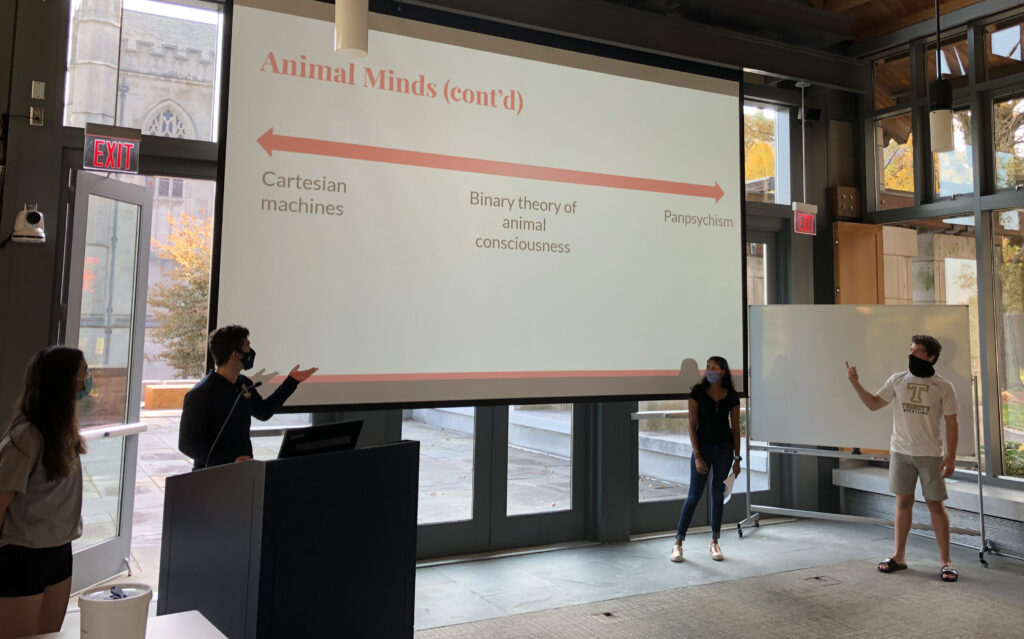
Grubb uses time outside of class to build one-on-one relationships with students via Zoom meetings. “Our 5- or 10-minute check-ins give us a chance to have a conversation and see each other’s faces, which has helped to forge a connection,” he said. “Part of what I want to do is to provide as much structure and normalcy as I can in a very unstructured and unusual time. I think a lot about how I can make this year be as close as possible to what it would normally be like, while keeping everyone safe.”

Associate Professor of Psychology Laura J. Holt made use of the Life Sciences Center Quad as a place for outdoor small group meetings and guided meditation exercises during her in-person classes this semester.
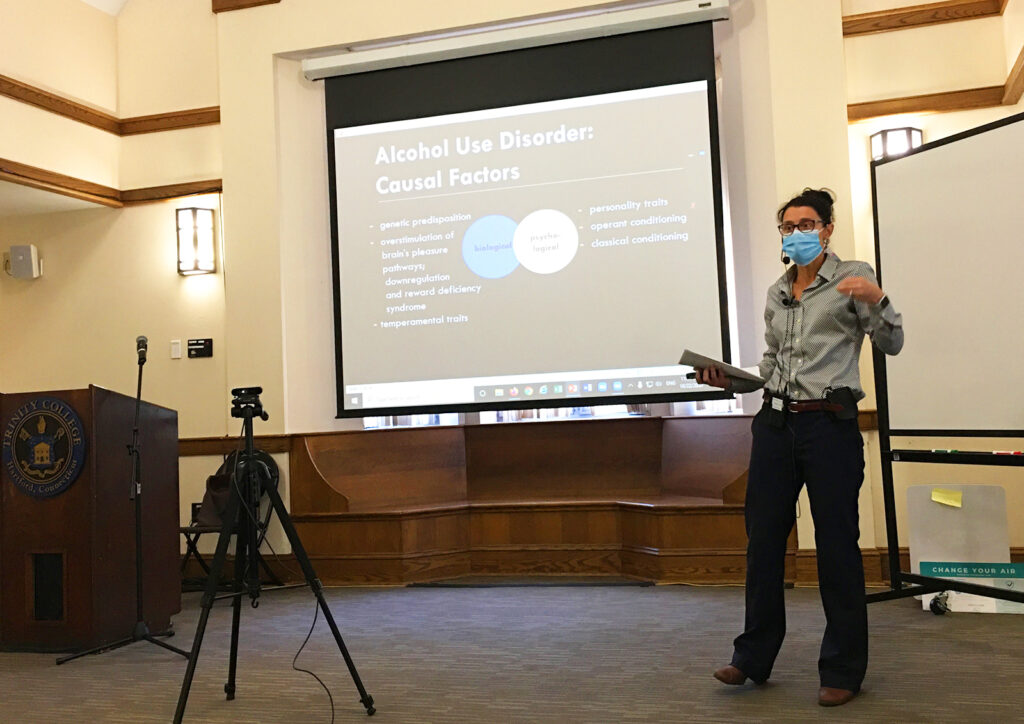
Holt teaches in Mather Hall’s Terrace Rooms, where she uses a microphone to be heard over the projector and the air scrubbers running in the front and back of the room. “I’m recording each of the classes, so students can go back to the material if they need to,” she said. “Students in quarantine can access the recordings or, more recently, watch the class live on Zoom.”
Teaching in a hybrid format

Assistant Professor of Engineering Clayton P. Byers also films and shares his lectures on Zoom for courses designed for a hybrid teaching format, with some students in person and others remote. “I have 32 students split over two sections of my lecture course, and I always have some online students in each section,” Byers said. His classroom in LSC is equipped with video and sound capabilities to serve both in-person and remote students. One challenge is the camera’s limited field of vision when aimed at the board. “It’s requiring me to be conscious of explaining my process because I’m having to erase the information that I would have gone back to reference,” Byers said.
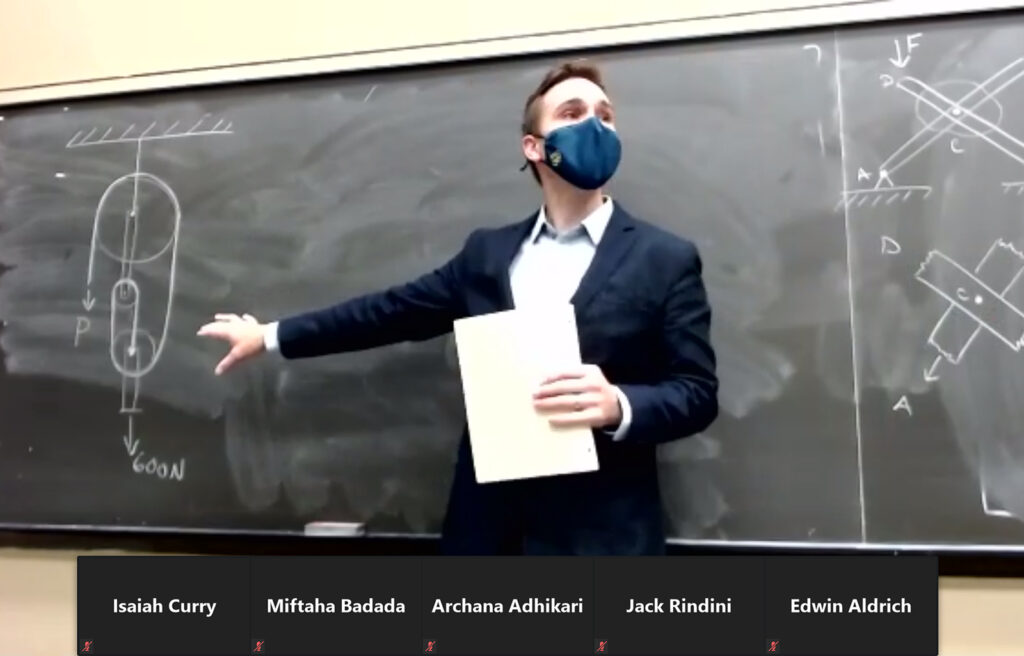
In order to equalize the experience for both the remote and in-person students, Byers has everyone take their quizzes online via Moodle with no time limits. To speak with Byers during drop-in office hours, students simply join a virtual meeting using an open Zoom link.
“I’m in this job because I love education; I love trying to help students learn,” Byers said. “This may not be exactly the way I’d ideally want to teach, but I feel I have an obligation to the students, and so I’m going to adjust and do what I can to give them everything possible.”
To learn more about Trinity’s Center for Teaching and Learning and its resources for effective teaching in any format, click here.
